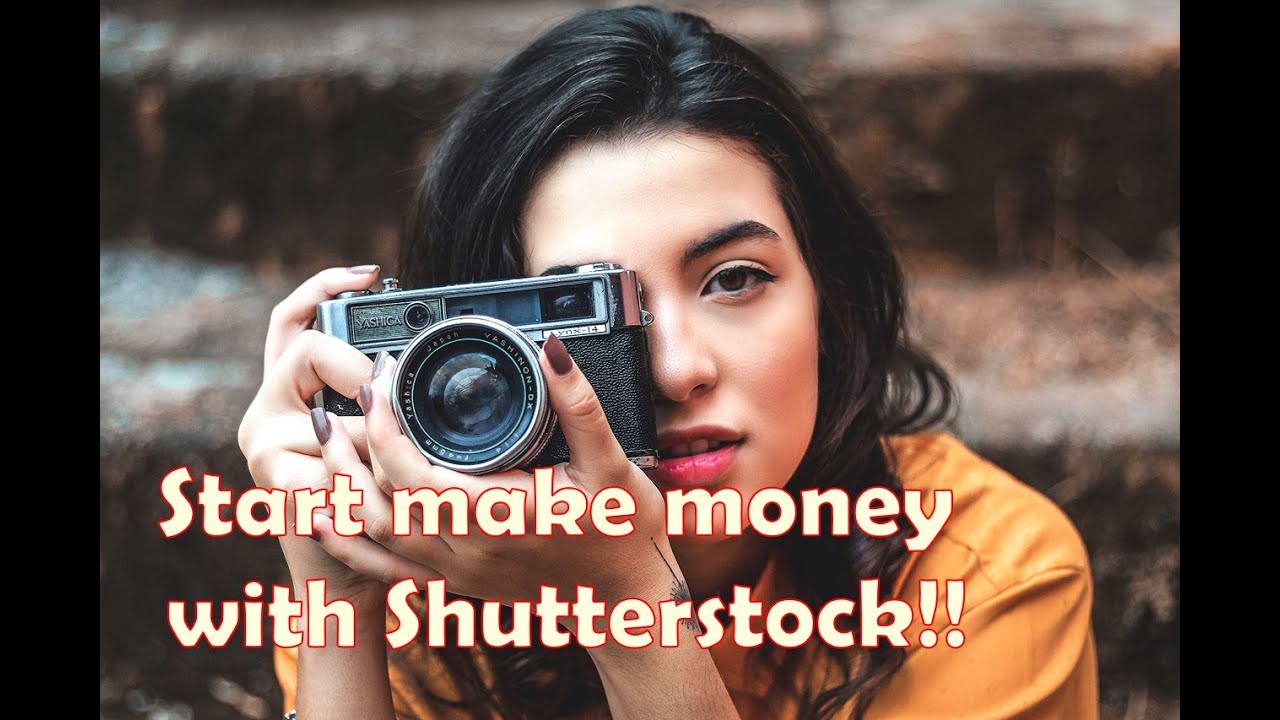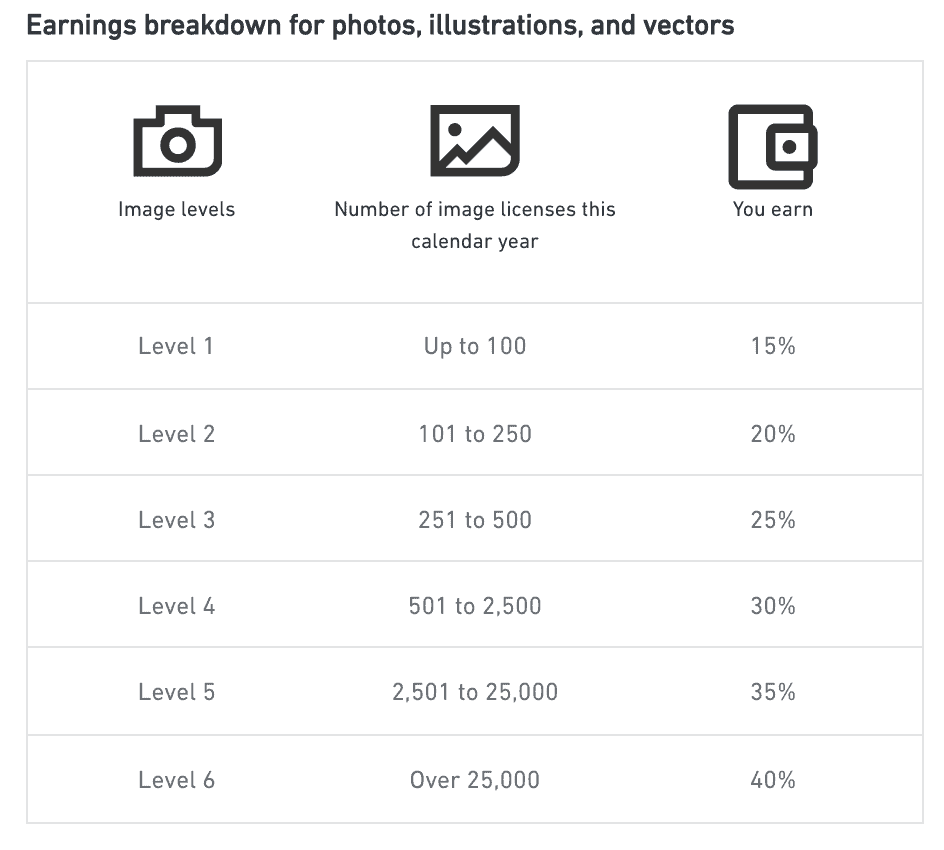If you’re a photographer looking to share your work and earn some extra income, Shutterstock might just be the platform for you. It’s one of the biggest stock image sites out there, connecting creatives with businesses, marketers, and content creators who need high-quality visuals. When you join Shutterstock as a contributor, you’re essentially opening a door to a global marketplace where your images can be licensed and purchased by people all around the world. The platform offers a straightforward way to monetize your photography, and understanding how their payment system works is key to making the most of it. So, let’s dive into what
How Shutterstock Calculates Payments to Photographers

Understanding how Shutterstock determines how much you earn per image can seem a bit complex at first, but once you get the hang of it, it’s pretty straightforward. Your earnings depend mainly on the type of license purchased, your contributor level, and the number of downloads your images receive.
Here’s a quick rundown of the main factors that influence your payments:
- Type of license: Shutterstock offers two primary licenses—Standard and Enhanced. The Standard license is more common and cheaper, while the Enhanced license allows for broader use and commands a higher price. You earn a different percentage based on the license type.
- Contributor level: Shutterstock has a tiered system—New Contributor, Rising Star, and Elite. As you upload more images and earn more, you move up levels, which increases your earning percentage.
- Number of downloads: The more your images are downloaded, the more you earn. Typically, your earnings per download stay consistent within your contributor level, but higher levels mean higher payout percentages.
How earnings are calculated:
| Contributor Level | Standard License Earnings | Enhanced License Earnings |
|---|---|---|
| New Contributor | 25% of the sale price | 30% of the sale price |
| Rising Star | 30% of the sale price | 35% of the sale price |
| Elite | 40% of the sale price | 45% of the sale price |
For example, if your image is licensed under the Standard license and you’re at the Rising Star level, you earn about 30% of the license fee. If the license fee is $50, your cut would be roughly $15. The actual payout can vary based on the license type and your contributor status, but this gives you a good idea of how the system works.
It’s worth noting that Shutterstock offers a minimum payout threshold—once you reach a certain amount (often around $35), you can request a payout. They also provide transparency through detailed dashboards showing your earnings, downloads, and performance metrics, so you can track your progress and optimize your portfolio.
In summary, Shutterstock’s payment structure rewards active contributors with higher earnings as they upload more quality images and move up levels. By understanding these factors, you can strategize better about what kinds of images to upload and how to grow your presence on the platform. Happy shooting and earning!
Factors Influencing Shutterstock’s Payment Rates Per Image

When it comes to how much you can earn per image on Shutterstock, there’s no one-size-fits-all answer. Several factors come into play that can influence your actual payout per download. Understanding these factors can help you make smarter decisions about submitting your work and optimizing your earnings.
1. Contributor Level and License Type
Shutterstock rewards contributors differently based on their level of experience and licensing options. New contributors typically start at a base rate, but as you upload more images and earn more, you can move up the contributor levels—such as Standard, Enhanced, or Exclusive. Higher levels usually come with better payout rates.
Additionally, the license type affects your earnings. Standard licenses are cheaper for customers and pay less per image, whereas Enhanced licenses, which are more expensive, tend to offer higher royalties.
2. Image Quality and Relevance
Just like any marketplace, the quality of your images matters. High-quality, well-composed, and relevant images are more likely to be downloaded. Shutterstock’s algorithm favors images that meet certain standards, which can increase your chances of higher earnings.
3. Customer Demand and Trends
Popular themes and trending topics often see higher download volumes, which can translate into better earnings. If your images align with current market demands—like remote work, sustainability, or specific holidays—they might earn more simply because they’re in higher demand.
4. Subscription vs. On-Demand Purchases
Shutterstock offers both subscription plans and individual image purchases. Typically, subscription downloads generate lower per-image payouts compared to single-image sales, but because subscribers download many images, the total earnings can still be substantial. Understanding this balance helps you set realistic expectations for your per-image earnings.
5. Geographic Location of Buyers
While Shutterstock pays contributors the same regardless of where the buyer is located, the volume of downloads can vary based on regional trends. Some markets might have higher demand for certain types of images, which can influence your overall earnings.
In summary, your payout per image isn’t fixed; it’s shaped by factors like your contributor level, license type, image quality, current trends, and buyer behavior. Staying aware of these can help you strategize and maximize your earnings on Shutterstock.
Average Earnings for Photographers on Shutterstock

So, what can photographers realistically expect to earn on Shutterstock? The truth is, it varies widely based on your portfolio size, image quality, and how much effort you put into uploading and marketing your work. But let’s break down some averages and what they mean for you.
Average Earnings Per Download
Most contributors report earning anywhere from $0.25 to $2.50 per download. The variation depends on license type, buyer location, and whether the download was through a subscription or an on-demand purchase. As mentioned earlier, subscription downloads tend to pay less per image but can add up due to volume.
Monthly Income Ranges
- Beginners: Many new contributors might earn around $50 to $200 per month during their first few months, primarily from a small portfolio and lower contributor levels.
- Intermediate Photographers: As your portfolio grows and you gain more visibility, earnings can increase to $200 to $500 per month.
- Established Contributors: Top performers with extensive, high-quality portfolios can earn $1,000 or more per month. Some even make several thousand dollars monthly, especially if their images are highly sought after or they hold exclusive licensing rights.
Annual Earnings Overview
| Contributor Level | Estimated Annual Earnings |
|---|---|
| Beginner | $600 – $2,400 |
| Intermediate | $2,400 – $6,000 |
| Top Tier/Exclusive | $10,000+ |
Remember, these are averages, and actual earnings can be higher or lower. Success on Shutterstock depends on your dedication, the quality of your images, and how well you understand market trends. The good news is that with consistent effort and strategic uploads, you can steadily grow your income over time.
So, if you’re just starting out, don’t be discouraged. Focus on building a solid portfolio, keep learning about what buyers want, and over time, your earnings can grow significantly. Happy shooting!
Tips to Maximize Your Earnings on Shutterstock

So, you’re eager to boost your earnings on Shutterstock? Great! While the platform offers a straightforward way to sell your photos, there are some smart strategies you can use to get the most out of it. Let’s dive into some practical tips to help you maximize your income per image.
Choose Your Niche Wisely
Specializing in a niche can really pay off. Whether it’s travel, food, technology, or lifestyle, focusing on a specific area helps you build a portfolio that attracts buyers looking for that style. Plus, if your images are high quality and consistent within your niche, Shutterstock’s algorithm is more likely to recommend your work.
Create High-Quality, Relevant Content
Quality trumps quantity. Make sure every image you upload is sharp, well-composed, and relevant to current trends. Use good lighting and avoid overly busy scenes—simple, clean images often perform better. Keep an eye on trending topics and popular searches to tailor your content accordingly.
Optimize Your Keywords
Keywords are your best friends on Shutterstock. Use descriptive, specific keywords that accurately reflect your image’s content. Think about what a buyer might search for and include synonyms and related terms. The more accurate your keywords, the higher your images will appear in search results.
Upload Consistently and Strategically
Regular uploads keep your portfolio active and increase your chances of being discovered. However, don’t just upload for the sake of it. Plan your uploads around seasons, holidays, or trending topics to maximize visibility and sales.
Engage with the Shutterstock Community
Participate in forums, follow other contributors, and stay informed about platform updates. Sometimes, Shutterstock offers promotional opportunities or contests that can give your work extra exposure. Building a network can also provide valuable feedback and inspiration.
Monitor Your Performance and Adjust
Use Shutterstock’s dashboard to see which images sell best. Pay attention to your top performers and analyze what makes them successful. Then, create more content along those lines. Don’t be afraid to retire images that aren’t performing well and experiment with new ideas.
Leverage Social Media and Personal Branding
Share your best work on your social media channels and personal website. Building a personal brand can drive traffic to your Shutterstock portfolio and increase sales. Just be sure to follow Shutterstock’s rules about self-promotion.
Remember, earning more on Shutterstock isn’t just about uploading a lot—it’s about uploading smart, high-quality content that meets the needs of buyers. With patience and persistence, you’ll see your earnings grow over time!
Conclusion and Final Thoughts on Shutterstock Payment Rates
Understanding how Shutterstock pays its photographers can seem complicated at first, but once you get the hang of the structure, it becomes easier to strategize your contributions. Remember, your earnings are influenced not only by the number of images you upload but also by their quality, relevance, and your engagement with the platform.
Shutterstock offers a great opportunity for photographers to monetize their work, especially if you’re consistent and strategic. The per-image payment structure means that every upload counts—so focus on creating compelling, high-quality images that meet current market demands. The more you learn about what buyers are looking for, the better you can tailor your portfolio for maximum earnings.
Keep in mind that earning well on Shutterstock often involves patience. Your income may start small but can grow significantly as your portfolio expands and your images gain visibility. Don’t get discouraged by initial slow periods; instead, use them as motivation to improve your skills and optimize your uploads.
Ultimately, the key to success on Shutterstock is a combination of quality content, smart keywording, regular uploads, and active engagement with the platform and community. With dedication and a strategic approach, you can turn your passion for photography into a steady stream of income. Happy shooting, and here’s to your growing success on Shutterstock!

